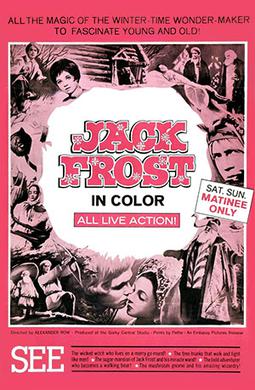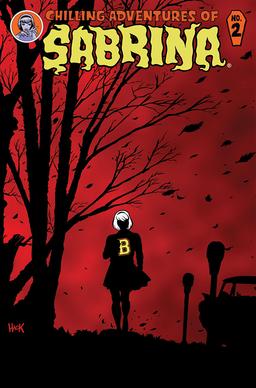The Forsyte Saga, first published under that title in 1922, is a series of three novels and two interludes published between 1906 and 1921 by the English author John Galsworthy, who won the 1932 Nobel Prize in Literature. They chronicle the vicissitudes of the leading members of a large upper-middle-class English family that is similar to Galsworthy's. Only a few generations removed from their farmer ancestors, its members are keenly aware of their status as "new money". The main character, the solicitor and connoisseur Soames Forsyte, sees himself as a "man of property" by virtue of his ability to accumulate material possessions, but that does not succeed in bringing him pleasure.

Dorothy Gale is a fictional character created by American author L. Frank Baum as the protagonist in many of his Oz novels. She first appears in Baum's classic 1900 children's novel The Wonderful Wizard of Oz and reappears in most of its sequels. In addition, she is the main character in various adaptations, notably the classic 1939 film adaptation of the novel, The Wizard of Oz.

The StoryTeller is a live-action/puppet television series that originally aired in 1987 and which was created and produced by Jim Henson.

Lady Susan is an epistolary novella by Jane Austen, possibly written in 1794 but not published until 1871. This early complete work, which the author never submitted for publication, describes the schemes of the title character.

The Witch of Blackbird Pond is a children's novel by American author Elizabeth George Speare, published in 1958. The story takes place in late 17th-century New England. It won the Newbery Medal in 1959.

The Merry Devil of Edmonton is an Elizabethan-era stage play; a comedy about a magician, Peter Fabell, nicknamed the Merry Devil. It was at one point attributed to William Shakespeare, but is now considered part of the Shakespeare Apocrypha.

Jack Frost is a 1964 Soviet romantic fantasy film made by Gorky Film Studio. It was based on a traditional Russian fairy tale Morozko. It was directed by Alexander Rou, and starred Eduard Izotov as Ivan, Natalya Sedykh as Nastenka, and Alexander Khvylya as Father Frost. The script was written by Nikolai Erdman. The soundtrack was composed by Nikolai Budashkin, who was inspired by the works of Nikolai Rimsky-Korsakov. A version with an English dub was released in 1966 in the U.S. and was the one also spoofed on the cult TV series Mystery Science Theater 3000. It was also spoofed by the Rifftrax.com site in 2021.
The Brown Bear of Norway is an Irish fairy tale collected by Patrick Kennedy which appeared in his Legendary Fictions of the Irish Celts (1866). It was later included by Andrew Lang in his anthology The Lilac Fairy Book (1910), though Lang misattributed his source as West Highland Tales.

Ulysses is a 1954 fantasy-adventure film based on Homer's epic poem Odyssey. The film was directed by Mario Camerini, who co-wrote the screenplay with writer Franco Brusati. The original choice for director was Georg Wilhelm Pabst but he quit at the last minute. The film's cinematographer Mario Bava co-directed the cyclops Polyphemus segment (uncredited).

Susan Ahn Cuddy was the first female gunnery officer in the United States Navy. She was the eldest daughter of Korean independence activist Ahn Chang-ho and Helen Ahn, the first married Korean couple to immigrate to the United States in 1902. She joined the Navy in 1942 and served until 1946, reaching the rank of lieutenant. She was the first Asian-American woman to join the U.S. Navy.

Elizabeth Sawyer was a convicted witch during the reign of James I of England.

The Homesman is a 2014 Western historical drama film set in the 1850s Midwest and directed by Tommy Lee Jones. The screenplay by Jones, Kieran Fitzgerald, and Wesley Oliver is based on the 1988 novel of the same name by Glendon Swarthout. The film stars Jones and Hilary Swank and also features Meryl Streep, Grace Gummer, Miranda Otto, Hailee Steinfeld, John Lithgow, Jesse Plemons, and James Spader.

Chilling Adventures of Sabrina is an American comic book series published by Archie Horror, an imprint of Archie Comics, beginning in 2014. The series is a darker take on the characters and setting of Sabrina the Teenage Witch. It is written by Roberto Aguirre-Sacasa, with art by Robert Hack, and is inspired by the appearances of Sabrina in Aguirre-Sacasa's other Archie series, Afterlife with Archie.

An Old, Old Tale is a 1968 Soviet musical film directed by Nadezhda Kosheverova. It is based on four fairy tales by Hans Christian Andersen: "The Tinderbox", "The Travelling Companion", "The Swineherd" and "Blockhead Hans".
Prince Wolf is a Danish fairy tale collected by Svend Grundtvig in his book Danske Folkeaeventyr. It is related to the international cycle of the Animal as Bridegroom or The Search for the Lost Husband. Tales with similar motifs and elements are found across Denmark and Scandinavia.
The Horse Lurja is a Georgian folktale published by Georgian folklorist Mikhail Chikovani. It tells the story about the friendship between a princess and a magic horse, which sacrifices itself for her after it rescues her from great peril. Although the tale appears in Georgia, some scholars recognize similar narratives in Central Asia and across Europe.
The Tale about Baba-Yaga is a Russian fairy tale first published in a late 18th-century compilation of fairy tales.
Sigurd, the King's Son is an Icelandic fairy tale collected and published by author Jón Árnason. It is related to the international cycle of the Animal as Bridegroom or The Search for the Lost Husband, wherein a human princess marries a prince under an animal curse, loses him and has to search for him.












